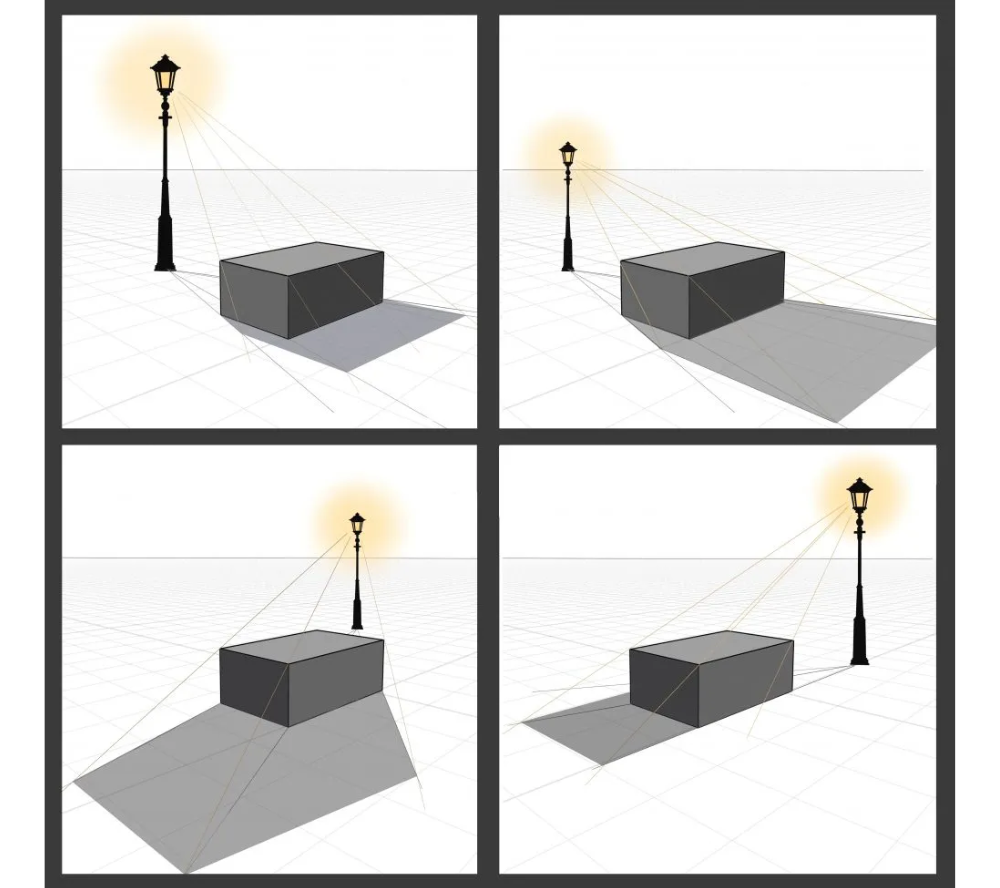In my latest post, I explained the importance of highlights and shadows and the main rules you need to know. But this post will be about highlights, shadows, and cast shadows in drawings, with many examples of cast shadows. I will explain the geometry behind the process if you want to give a sense of realistic volume and depth to your drawings.
Remember to download the PDF where you can try these examples by yourself! It took me some time to finish this post; I am not gonna lie! I wanted to make it clear and easy to understand. But here it is, finally!


Look at this ball; this is how it looks when light hits it. There are three simple areas of a form that you need to know.
– Light side: The Highlight is the very lightest part. It’s where the light directly hits the object, so it is the best indicator when you look at your subject to determine where and at what angle the light is coming from. I usually make this part very white.
– Shadow side: The dark side of an object not facing the light reveals the shape’s form and mass.
– Cast shadow: is situated right under the object and is attached to it. It gives the physical presence of the object, and it makes it look heavy set in the environment it’s in.



















